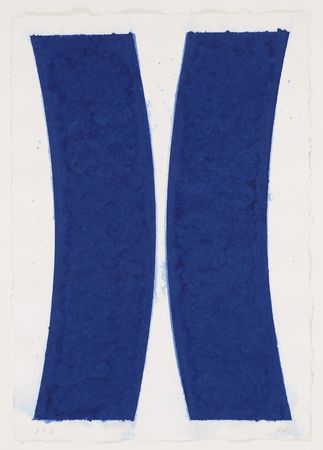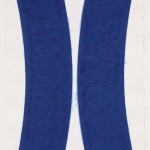A REPORT FROM THE PHANTOM ZONE
A MOMA Novella
Chapter 1: The Opening
They went to museum to have fun, but it turned out the museum completely sucked.
"Free tickets and the members only opening? How could it not be fun?" Matthew said to Sarah.
"Ooh, we can dress up and walk around before they let the riff-raff in!" she agreed.
So the date was set:
June 28, 2008. Manhattan. 53rd between Fifth and Sixth. 8 PM sharp. For the members only opening of: "Dalí: Painting and Film"
(12 full hours before the riff-raff would be let in to see the exhibition.)
The brochure made the exhibition seem monumental. The kind of exhibit that if you missed, you would have missed more than just a piece of history, you would have missed a complete re-visioning of a great master's work. Everyone has seen a Dali, who has seen Dali's paintings displayed next to his films? For that matter, who even knew Dali made films? But as usual, MOMA has given American culture a gift.
But here is the thing the brochure left out:
The movies suck.
Walking around for hour, Matthew and Sarah came to the same conclusion:
"Wow. Surprise. Dali tried to make surreal films," said Matthew.
Perhaps interesting in their time, most of Dali's attempts at making surreal cinema now read like bad uses of Final Cut filters. The wall text gave high praise for Dali creating the dream sequence for Hitchock's "Spellbound" (1945); which is a big eye floating and a faceless man in a tuxedo.
"If I did a film with a faceless man in a tuxedo, no one would call me a genius. No one would even call me back..." said Sarah.
"Well, Dali did it, so it must be great." replied Matthew.
"I'm not convinced that's how it works..."
"How what works? Making art or exhibiting art at MOMA or just being a genius?"
"I don't think that's how any of it works... Let's see what else this place has got..." said Sarah as they headed down the escalators to the lower floors where MOMA houses the permanent collections.
Chapter 2: The Lower Floors
The lower floors of MOMA were populated by families where one member was desperately trying to convince an older member that contemporary art was not "crap". Children were whining about everything. Young couples were trying to impress each other with knowledge of who had painted what; usually after reading the wall text.
But mostly, the lower floors of MOMA were filled with fake awe. The kind of acted awe when someone sees something they have heard about and want to believe they feel real awe, but don't. So they fake it. This effect can usually be seen in front of a Monet and it sounds like "Wow, it's just so amazing..." Some people even fake cry. Which is just embarrassing for everyone. No one likes Monet that much.
But then something strange happened. Matthew and Sarah turned the corner into the Modern Art section and a man was standing in front of an Ellsworth Kelley.
"Why is he crying in front of a Kelley?" Sarah whispered to Matthew. "Kelley's work is an intellectual exercise in geometry and color... no one cries in front of it, people go to Goya to cry..."
So they stood there and watched a man cry in front of Kelley. He was an older man, probably 50 or 60 years old. His clothes were neat and obviously put together. His balding grey hair still looked becoming, but would soon fall out and make him look old, not just older. He looked to old to cry in public, but not quite old enough to do whatever he wanted in public.
"Dude, you ok?" Matthew finally asked.
"Yeah... I just got a lot going on," he replied.
"Why are you crying?" Sarah asked.
"It's the painting. It just makes so much sense," he replied, but he saw they didn't get it.
"It's like this. Ever have things get so complex that you forget that they don't have to be? Rent, family, jobs, kids running off, the government, people in other countries dying, the environment, late bills, traffic tickets, retirement, illness, death, the weather, social status, and for me, divorce. It's all so much. Everyday from when I wake up to when I go to sleep. If I can sleep. I came here to see the exhibit upstairs, but it was just people telling me things are more complicated than they seem. Reality is so complicated it is no longer real, my mind is more complicated than I can perceive, my life is more complicated than I can live.
Then there's this painting. It's just two blue lines. Rather than making things more complicated, it says that things can be reduced to something simpler. That simple is beautiful and that there can be wisdom in not over complicating things.
I don't need to be told that world can be made to look surreal, that's easy, just make it more and more complex until what is left is too hard to process. What's more difficult to do is to show that reality is as simple as two blue lines. That's real. And strangely enough, that gives me hope.
So I became overwhelmed by the emotion that everything will be ok. That's why I was crying. Because for the first time in months, I know everything will be ok, if I just stop complicating things."
And with that, he turned and walked away.
When Sarah and Matthew left the museum, they threw-out the Dali brochure.
"We don't need one more brochure cluttering up what we have."
- Ellsworth Kelly, Colored Paper Image V (Blue Curves)
"Dalí: Painting and Film" is on view June 29 - September 15, 2008 at MOMA.





